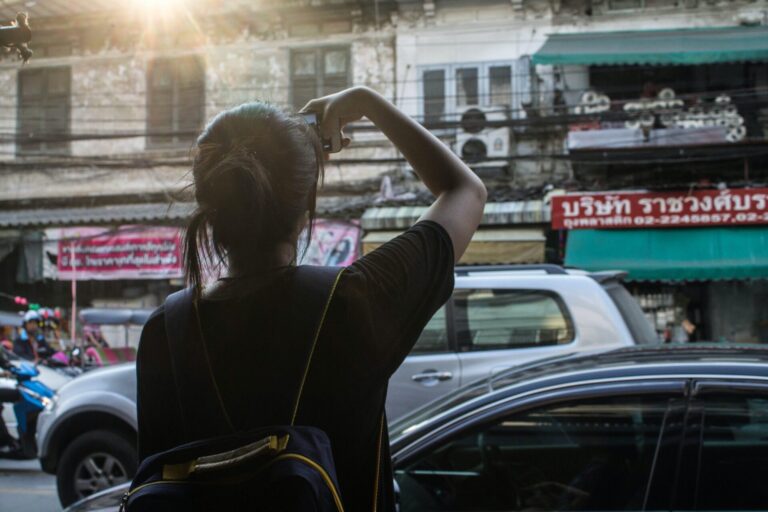When in Turkey: The 11 Unmissable Historical Places in Istanbul
Many historical places in Istanbul date back to ancient times when the Greek colony of Byzantium was founded in the 7th century BCE. The city later became the capital of the Eastern Roman Empire, known as Constantinople. In 1453, Constantinople was conquered by the Ottoman Empire, serving as its capital until its fall in 1923. Constantinople was finally officially renamed Istanbul in 1930.
Thanks to this rich history, Istanbul is covered with historic sites, monuments, and cultural artifacts. One of the most famous examples of such a historical site in Istanbul is the Hagia Sophia, a cathedral built in the 6th century CE that was later converted into a mosque. The Topkapi Palace, the Suleymaniye Mosque, the Blue Mosque, and the Basilica Cistern are other notable historical sites.
As of today, Istanbul is still the largest financial center of Turkey and even the largest city in Europe! This means that Istanbul is a modern and cosmopolitan city, but its rich history is still very much present. Visitors can still see the historic walls of the city, the ancient ruins, and the beautiful Ottoman-era architecture throughout the city. Many of these historical sites have been preserved and are open to visitors.
Page Contents
Tips for visiting historical places in Istanbul
- Be respectful: Many of the historical places in Istanbul are still active places of worship, so be sure to dress modestly and follow any rules or customs that may be in place. This will help you show respect for the local culture and ensure a more meaningful experience.
- Time it right: Istanbul’s historical sites can get crowded, especially in peak tourist season. To avoid crowds, try to visit early in the morning or later in the evening. This will also allow you to see the sites in a different light and avoid the heat of the day.
- Learn some basic Turkish: Istanbul is a bustling, cosmopolitan city, but not everyone speaks English. Learning some basic Turkish phrases will make your trip smoother and more enjoyable.
- Use public transportation: Istanbul has an extensive public transportation system, including buses, trams, metro, and ferries. This is an affordable, efficient, and environmentally friendly way to get around the city.
A map of the top tourist attractions in Istanbul
By now, you should have noticed that Istanbul is a city with a wealth of historical and cultural attractions … which means that navigating these can be overwhelming for visitors. One way to simplify the process is to use a map of Istanbul’s attractions.
The maps below highlights the most popular and iconic sites, such as the Hagia Sophia, Topkapi Palace, and the Blue Mosque, as well as lesser-known gems and hidden gems, making it easy to plan your itinerary and navigate through the city.
Historical Places in Istanbul
Istanbul, the city that straddles two continents, is a treasure trove of ancient history, culture, and architecture; from the grandeur of the Hagia Sophia to the serene beauty of the Blue Mosque, there are countless historical sites to explore in Istanbul.
We’ve put together this guide of tips for visiting ancient Istanbul so you can make the most of your trip and experience the best of Istanbul’s rich history. So whether you’re a first-timer or returning visitor, read on to discover the Historical Places in Istanbul.
Blue Mosque
The Blue Mosque, also known as the Sultan Ahmed Mosque, is a famous mosque that was built in the early 17th century during the rule of the Ottoman Empire and is known for its intricate blue tilework and six minarets.
The mosque is still an active place of worship and is one of Istanbul’s most visited tourist sites, as it allows you to admire the grand architecture, intricate tilework, and serene atmosphere inside. Just keep in mind that it is closed during prayer times, and there is a dress code to respect.




Basilica Cistern
The Basilica Cistern is an ancient underground water storage facility built in the 6th century during the Byzantine Empire to store water for the palace and city. It is located near the Hagia Sophia and for the creepy atmosphere created by dim lighting and the sound of the water.
The cistern is an impressive feat of engineering, featuring 336 marble columns arranged in a grid pattern and two Medusa head sculptures used as architectural support. Visitors are allowed to walk along the cistern’s raised walkways and admire the ancient engineering, as well as the historical and cultural significance of the cistern.



Hagia Sophia
The Hagia Sophia is a historical landmark located in Istanbul, originally built as a cathedral in the 6th century during the Byzantine Empire. It was later converted into a mosque after the Ottoman conquest of Constantinople in 1453 and was turned into a museum in 1935, but in 2020 they converted it back into a mosque.
The mosque might be one of the most important architectural structures in the world, as it’s known for its massive dome, intricate mosaics, and architectural innovation. They even recognized it as a UNESCO World Heritage Site, making it the most visited tourist site in Istanbul.







Topkapi Palace Museum
The Topkapi Palace Museum is a historical palace in Istanbul, known as the primary residence of the Ottoman sultans and their court for nearly 400 years. The palace was built in the 15th century and contained beautiful courtyards and impressive collections of art and artifacts.
The palace has been converted into a museum and is now open to visitors, who can explore its various buildings, courtyards, and rooms. This includes the Harem section, which was the sultan’s private quarters and his family. It also houses an impressive collection of Ottoman art and artifacts, including jewelry, manuscripts, ceramics, and weapons.
Dolmabahce Palace
The Dolmabahce Palace was built in the 19th century as the main administrative center of the Ottoman Empire, and it was the residence of the Ottoman sultans. It is open to visitors and offers a great glimpse into the luxuriant lifestyle of the Ottoman sultans.
The palace contains 285 rooms, 46 halls, six baths, and a ceremonial hall that can accommodate up to 4,000 people. It’s overwhelmed with grand architecture, ornate decoration, and luxurious interiors and has a blend of various architectural styles, including Baroque, Rococo, Neoclassical, and Ottoman.
Suleymaniye Mosque
The Suleymaniye Mosque was built in the 16th century during the reign of the Ottoman sultan Suleiman the Magnificent, and it’s known for its grand size, intricate decoration, and its location on one of the city’s highest hills.
The famous Ottoman architect Sinan designed the mosque with an impressive dome and four minarets. Next to the mosque (which is still an active place of worship), the complex also includes various other buildings, such as madrasahs, a hospital, and a library.
Galata Tower
The Galata Tower, also known as Galata Kulesi, is a medieval stone tower built in the 14th century as a part of the city’s fortifications, and it’s one of the most iconic landmarks in Istanbul. The 67-meter tall tower is located in the Galata district and has been used for various purposes throughout history, including as a fire tower, prison, and radar station.
Nowadays, it offers a panoramic view of the city and contains an observation deck on the top floor, a restaurant, and a café. This makes it a popular tourist attraction, as visitors can enjoy the view from the top and learn about the tower’s history and significance in the city.





Sultanahmet Square
Sultanahmet Square, also known as Sultanahmet Meydanı, is a historic public square located in the Fatih district of Istanbul, Turkey. It is situated in the heart of the city’s old quarter and is home to several important landmarks, including the Hagia Sophia, the Blue Mosque, and the Topkapi Palace.
The square is a popular tourist destination known for its picturesque views, lively street vendors, and outdoor cafes. It is also a hub for public transportation, including bus and tram lines. The square is an important cultural and historical site, and it’s considered the heart of Istanbul’s old city.
Istanbul Archaeology Museums
The Istanbul Archaeology Museums is a group of three museums located in the Eminönü district of Istanbul;
- Istanbul Archaeological Museum. The main museum and known as the oldest archaeological museum in Turkey. It was established in 1891, is one of the oldest in the world, and houses a vast collection of artifacts from the ancient civilizations of Anatolia, Greece, Rome, and the Ottoman Empire.
- The Tiled Kiosk Museum. The museum is housed in a restored 15th-century Ottoman kiosk and features a variety of tile panels, fountains, and other decorative elements. It also displays a collection of Ottoman ceramics and tiles, dating from the 15th to the 19th centuries.
- The Museum of the Ancient Orient. It is dedicated to displaying and preserving artifacts from the ancient civilizations of the Near East, including Mesopotamia, Anatolia, and Egypt. The museum’s collection includes a variety of objects such as pottery, stone and metal sculptures, seals, and inscriptions from the Sumerian, Akkadian, Assyrian, and Hittite civilizations, as well as from the ancient Egyptians. It is one of the most important museums in Istanbul for those interested in the history and archaeology of the ancient Near East.
Taksim Gezi Park
Taksim Gezi Park is a public park located in Istanbul and known as one of the last green spaces in the city. In 2013, they tried to demolish the park as they had plans to build a shopping mall but this sparked protests and civil unrest, known as the Taksim Gezi Park protests, which lasted for several weeks and resulted in several deaths and injuries.
The plans for the mall were eventually abandoned, and the park is now a symbol of resistance and a focus on Turkey’s political and social issues.
Rustem Pasha Mosque
The Rustem Pasha Mosque is a mosque that was built in the 16th century by the famous Ottoman architect Mimar Sinan, and is considered one of his finest works. The mosque is known for its intricate tile work and decoration, including various geometric patterns and calligraphy.
Save for later …














